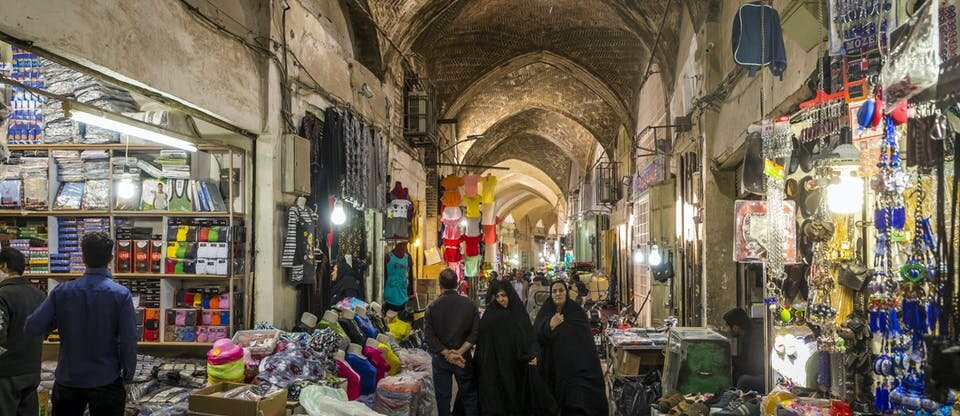TEHRAN - One of Iran’s most historic and fascinating traditional marketplaces, the sprawling covered Bazaar of Isfahan (locally known as Bazaar-e Bozorg) is situated in a city of the same name.
The Bazaar of Isfahan links the UNESCO-registered Imam Square (originally known as Meydan-e Naqsh-e Jahan) with the Jameh Mosque of Isfahan. Its charms may never end for enthusiasts of Persian culture seeing numerous craftspeople boasting skills in the mazing arcades producing handicrafts with copper, woods, ceramics, and wool.
Sometimes called “a city within another”, the bazaar is a maze of lanes, madrasas, caravanserais, and timchehs (domed halls or arcaded centers of a single trade, such as carpet vendors or coppersmiths). It can be entered at dozens of points, but the main entrance is via the Qeysarieh Portal at the northern end of Naqsh-e Jahan Square.
At its busiest in the mornings, the bazaar’s arched passageways are topped by a series of small perforated domes, each spilling shafts of light onto the commerce below. While the oldest parts of the bazaar (those around the mosque) are more than a thousand years old, most of what can be seen today was built during Shah Abbas’ ambitious expansions of the early 1600s.

Cool in summer and warm in winter, it’s easy to lose half a day wandering the bustling lanes of the bazaar, sniffing the heaps of layered spices and dishes of dried dates, watching shoppers finger colored lengths of material, and pausing to admire the rows of red and white teapots in the many crockery shops.
From another point of view, bazaars are also synonyms of foods, with their unmissable colorful stalls of vegetables, herbs, and spices. Yet, most of these ingredients might be mysterious to a foreign eye. Teahouses help punctuate the walk and a traditional restaurant is a perfect place for lunch.
Browsing through a traditional bazaar may provide new experiences and fresh points of view on the ancient land. Such excursion can be made either in person or by “off-the-beaten-track” tours. Not only it's an opportunity to discover dozens of unique local ingredients, but it's also a chance to taste street foods and delicacies, in some traditional bakery known only by locals and shopkeepers.
People watching and even mingling with them in the bazaars is one of the best ways to take the pulse of the country. Bazaars have traditionally been major economic and social centers in any Iranian city.
Soaked in a rich history, Isfahan was once a crossroads of international trade and diplomacy in Iran and now it is one of Iran’s top tourist destinations for good reasons. The city is filled with many architectural wonders such as unmatched Islamic buildings, bazaars, museums, Persian gardens, and tree-lined boulevards.
Many international travelers to the central Iranian city believe that it equals an endless charm by embracing so many diverse monuments, landscapes, and above all; hospitable people. The historical core of Isfahan is a masterpiece of Safavid-era architecture popularly known as “half of the world” meaning seeing it is relevant to seeing the whole world.
TAGS


No comments:
Post a Comment